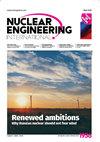Maximizing the Potential of Artificial Intelligence to Perform Evaluations in Ungauged Washbowls
IF 0.6
4区 工程技术
Q4 Engineering
引用次数: 2
Abstract
Long short-term memory networks (LSTM) offer precision in the prediction that has never been seen before in ungauged basins. Using k-fold validation, we trained and evaluated several LSTMs in this study on 531 basins from the CAMELS data set. This allowed us to make predictions in basins for which we did not have any training data. The implication is that there is usually sufficient information in available catchment attributes data about similarities and differences between catchment-level rainfall-runoff behaviors to generate out-of-sample simulations that are generally more accurate than current models when operating under ideal (i.e., calibrated) conditions, i.e., when using under idealized conditions. In other words, existing models are generally less accurate when working under idealized conditions than out-of-sample simulations. We found evidence that including physical limits in LSTM models improves simulations, which we believe should be the primary focus of future research on physics-guided artificial intelligence. Putting in place additional physical constraints on the LSTM models.最大限度地发挥人工智能在未计量的洗衣机中进行评估的潜力
长短期记忆网络(LSTM)提供了在未测量的盆地中从未见过的预测精度。通过k-fold验证,我们对来自camel数据集的531个盆地的lstm进行了训练和评估。这使我们能够在没有任何训练数据的盆地中进行预测。这意味着,在可用的集水区属性数据中,通常有足够的关于集水区降雨径流行为之间的相似性和差异性的信息,从而产生样本外模拟,当在理想(即校准)条件下运行时,即在理想条件下使用时,通常比当前模型更准确。换句话说,在理想条件下工作时,现有模型通常不如样本外模拟准确。我们发现有证据表明,在LSTM模型中加入物理限制可以改善模拟,我们认为这应该是未来物理引导人工智能研究的主要焦点。在LSTM模型上添加额外的物理约束。
本文章由计算机程序翻译,如有差异,请以英文原文为准。
求助全文
约1分钟内获得全文
求助全文
来源期刊

Nuclear Engineering International
工程技术-核科学技术
自引率
0.00%
发文量
0
审稿时长
6-12 weeks
期刊介绍:
Information not localized
 求助内容:
求助内容: 应助结果提醒方式:
应助结果提醒方式:


